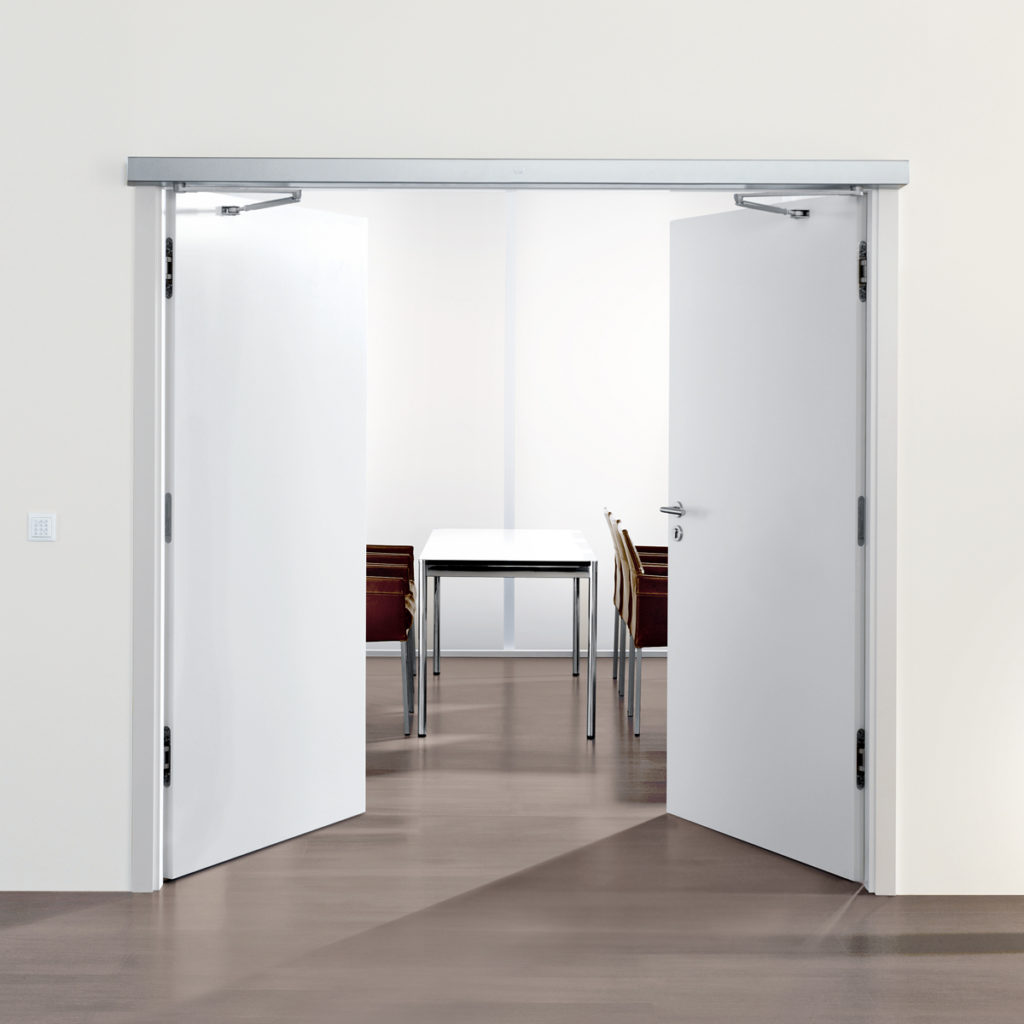10 facts to know before installing an automatic swing door.

1. The primary user of the door
The expectations on functionality and personal safety are influenced by the automatic door’s main users. Demands for personal safety rise in environments with a high percentage of children, the elderly, or individuals with special needs. Perhaps you want the door to open and close fast, which would further affect how the movement of the door leaf is to be protected.
2. Mounting of the swing door operator
If the door environment’s design allows it, a high-performing modern automated swing door operator is positioned either on the door’s opening or closing side. Since the operator is typically not located outside, outside doors are given the option of placement.
3. Wall strengthening
The door operator’s initial installation and fastening play a significant role in its functionality and future maintenance needs. Therefore, ensure that the fastening surface is reinforced in accordance with the manufacturer’s recommendations and then, of course, on the right side of the wall. This applies to both the mechanism and the arm system.
4. Wiring management
Numerous cable connections are necessary for an energy-efficient automatic door operator that is current and safe. Pre-routed conduits in the wall, door leaf, and section, along with hidden door loops, are necessary for concealed wires. The conduits must be made in line with the manufacturer’s specifications and should have impulse sensors built into them, like elbow switches. The choice of electromechanical locking mechanism and the application of presence sensors have an impact on the number of concealed door loops.
5. Space consideration
Regarding the area around the door, there are a number of things to consider. The device has to mount to the transom or door frame. A suitable arm system also needs some vertical space to be aligned. Make sure the operator has adequate lateral room as well.
It is crucial that there be space for the presence sensor and the fastening of the arm system when it comes to the design or selection of the door leaf. When double-leaf doors are divided, the passive door leaf should receive the presence sensor, if one is employed. Avoid using small double-leaf doors with passive door leaf that are less than 500 millimeters wide since there may not be enough room for an arm system and presence sensors.
6. Door leaf width and weight
Probably the first query a door operator supplier will ask is this one. The width, weight, and environment are used to calculate the level of performance that the mechanism must deliver.
7. Requirments for escape and fire
Is there a need for evacuation or will this automatic door operator be situated in a fire cell boundary? These factors should be checked carefully, and they determine which automatic door operator should be chosen.
This becomes especially crucial for double-leaf doors because fire regulations necessitate synchronized closure of the door leaves, which also needs to be taken into account in a de-energized state. Additionally, you might need to set up the system so that any radar and presence impulses comply with the standards.
8. Control and functionality
What operating system do you want the automatic door to use? Should the door open automatically using radar impulses to increase flow, or should automatic opening only happen when a push button is pressed? In the event of a fire alarm, should the door portion be held open and closed? Early on, having a clear vision of how it should operate makes it easier to design the system.
9. Door stop
In order to prevent damage to the swing doors’ mechanism and facade, it is generally required that door stops be used on all entrance doors in the facade. Will an exterior door stop be used, or does the system have the capability to incorporate a stop inside the operator?
10. Future Maintenance
All swing door operators must receive regular maintenance that is carried out by experts in the market. Make sure a reputable supplier can maintain the door solutions you have.
Click here to learn more about our Automatic Entrance Systems.